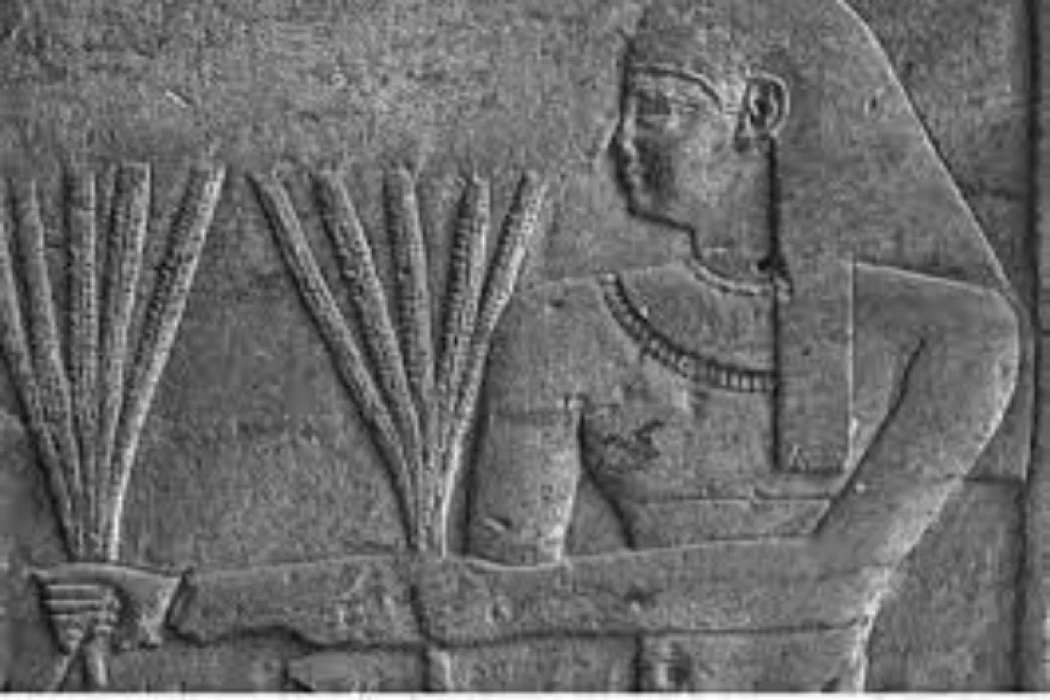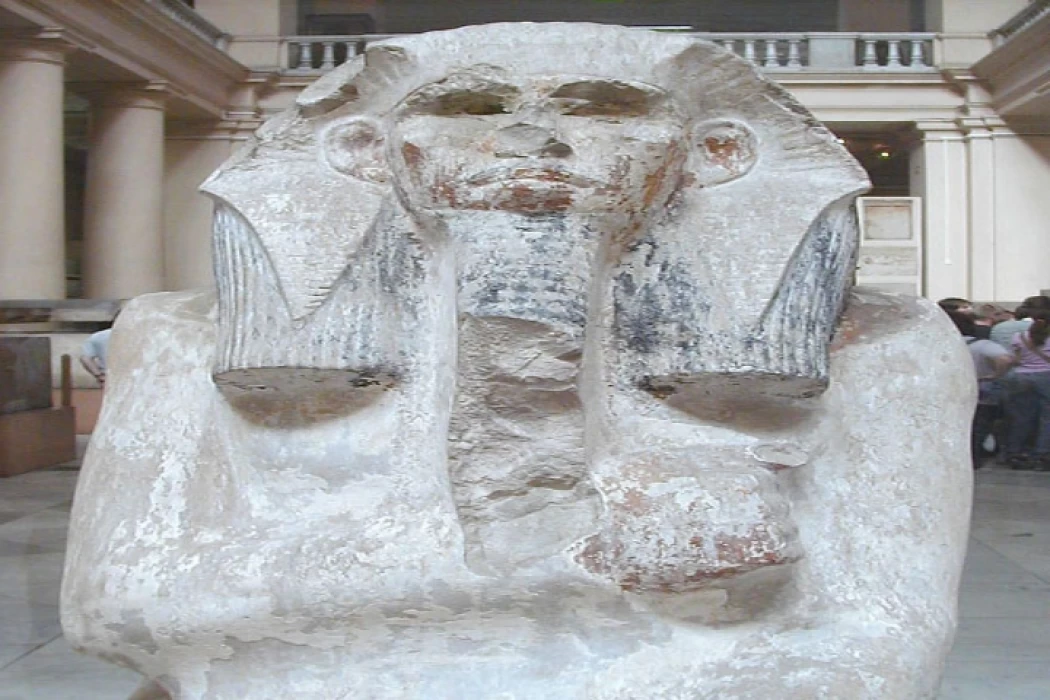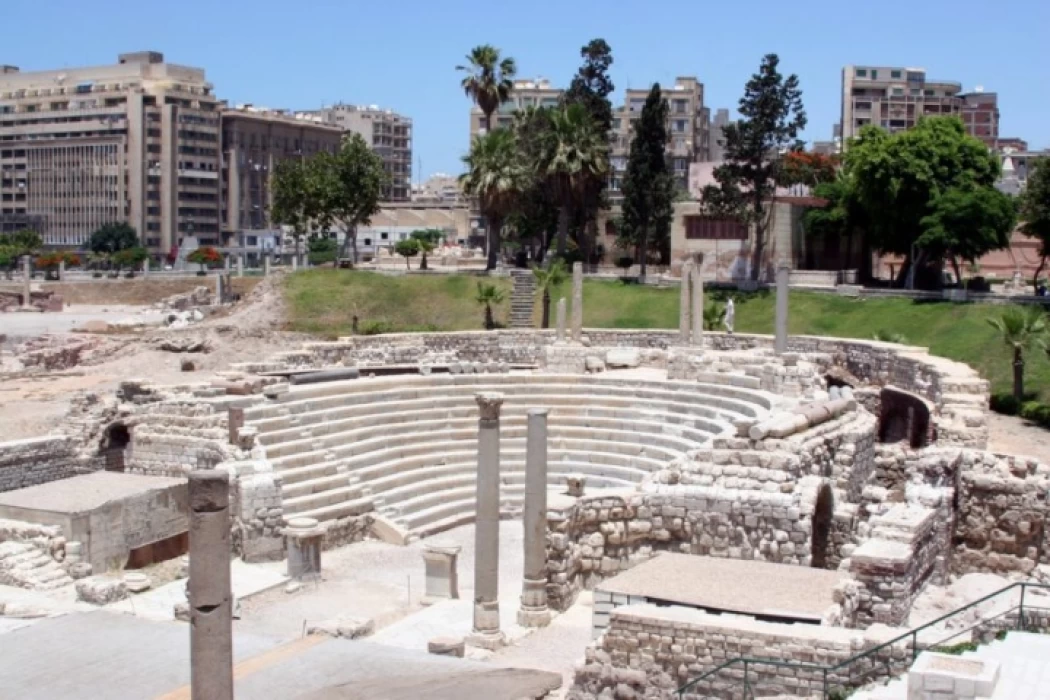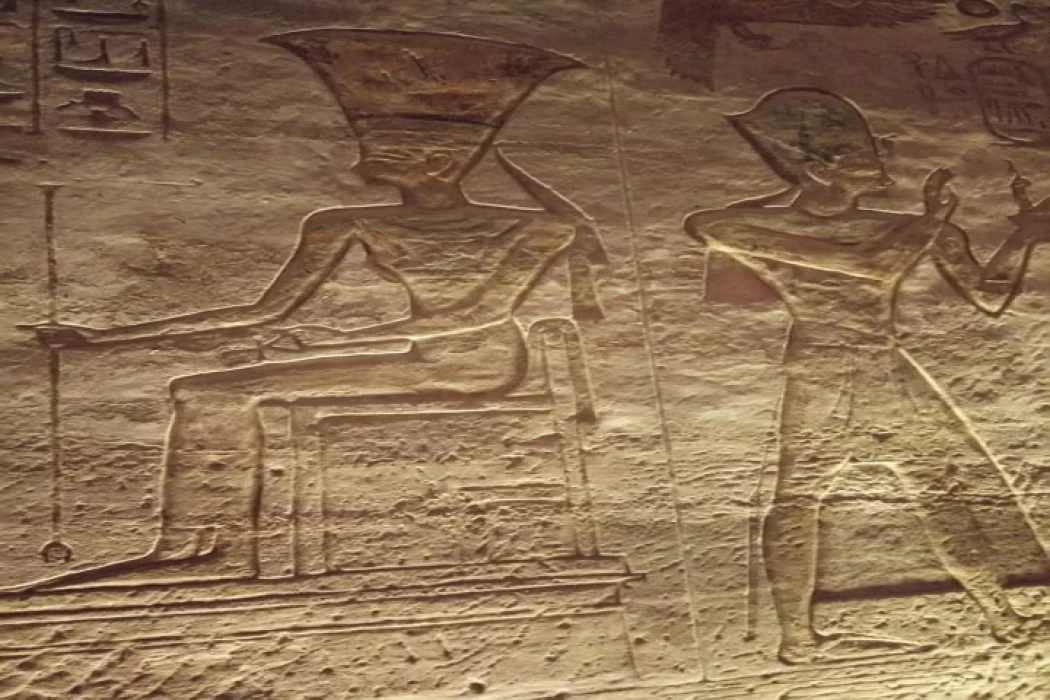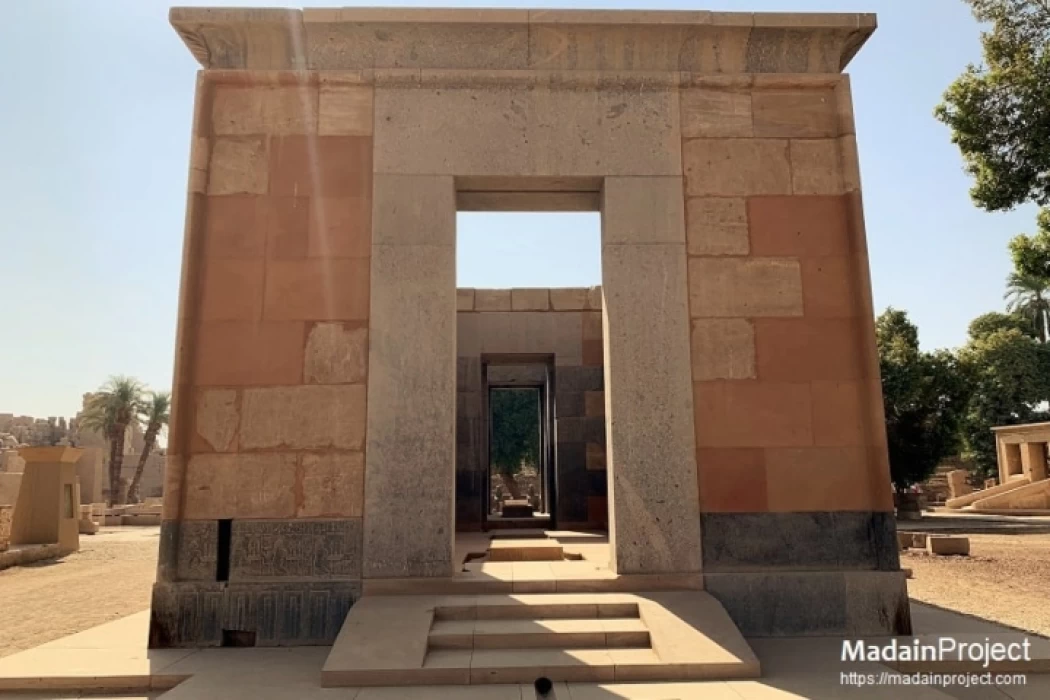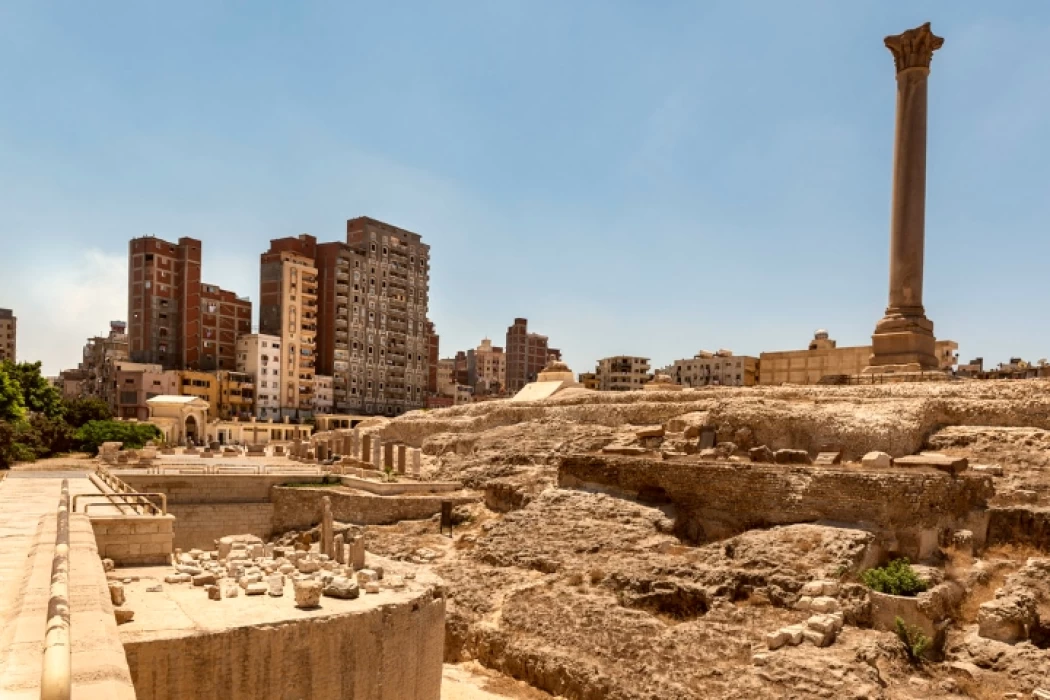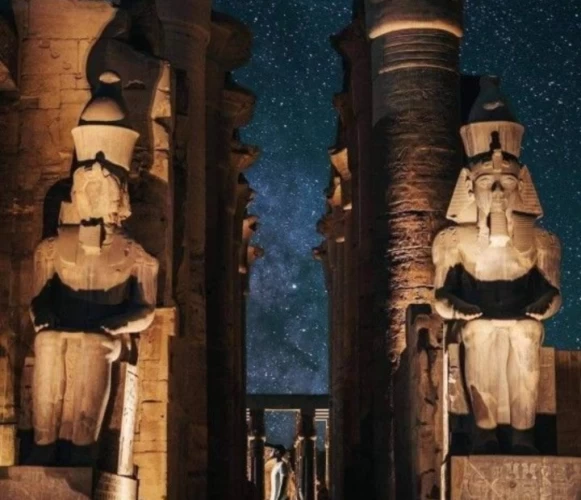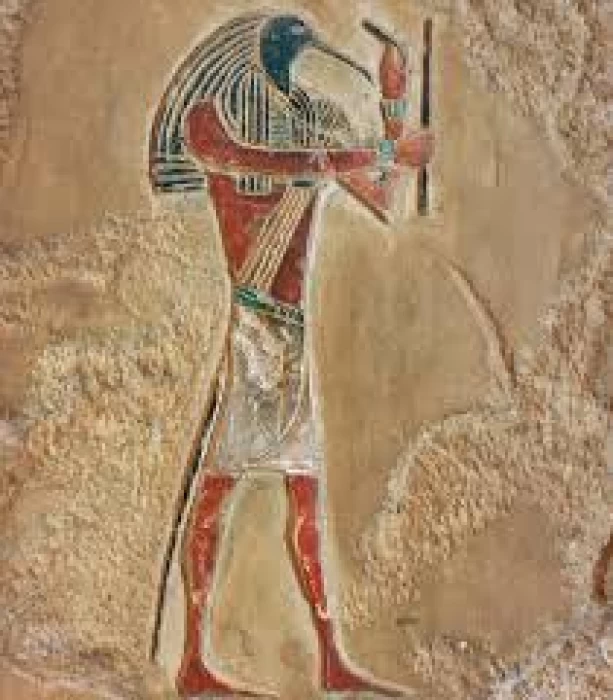
God Thoth | The God of Wisdom in Ancient Egypt
Thoth or TUT is the ancient Egyptian god of wisdom. One of Thamon Ashmunin's cosmic employers. He is considered one of the most important ancient Egyptian deities, depicted with the head of an ibis. His female counterpart is the goddess MAAT and his primary shrine was in Ashmun where he was the primary idol.
The ancient Egyptians considered that it was the god Thoth who taught them writing and arithmetic (see arithmetic among the ancient Egyptians), and he is always depicted holding a pen and a tablet on which he writes. He has an essential role in the court of the Dead, where the deceased is brought after the resurrection to have an operation weighing his heart in front of the feather of the right Maat. And Thoth records the result of the balance. If the heart of the deceased is heavier than the feather of the truth - then he will be one of the disobedient sinners - he throws his heart to an imaginary predatory beast named Amamm and devours him, and this is the eternal end of the deceased. But if the heart is lighter than the feather of truth (Maat), then this means that the deceased was righteous in this world.
Later, the Greeks renamed him Hermes, and the Greeks saw him as the envoy of the gods just as Hermes-Hermes and the Arabs renamed him (ashmunin) and nicknamed the name of the greatest three times.
The origin of Thot
The book (The Gods of the Egyptians) presents statements that Thoth was born from the skull of six and also presents other statements that he was born from the heart of RA and was considered the heart of RA and his tongue, in addition to transmitting the will of RA to humans.
In Egyptian mythology, Thoth played many vital and prominent roles, in addition to being one of the two gods-the other was Maat - who stood on either side of the boat of RA. the Egyptians even believed in the "book of Thoth", which turns its reader into the greatest able magician in the world.
His legend
He is associated with the role of mediator between the gods of good and evil. His legend tells that he experienced three conflicts between good and evil. The three conflicts are similar in principle, with the number of combatants changing according to the time of each legend. In the first battle it was the conflict between the god Ra and Aviv, the second between Heru-pikhotet and Set, and the third conflict between Horus the son of Osiris, and set. In each of these conflicts, the first God represented the "order" of the universe, and the second wrestler represented the forces of randomness and the loss of order. When one of the combatants was seriously injured, Thoth would treat him so that he could return to the battle, so that one would not overpower the other.
We also know about the role of Thoth in the myth of ISIS and Osiris. After ISIS collected the remains of Osiris from all over Egypt under the act of set, Thoth captured her with words so that she could resurrect him again, and (after his death) bear him their son Horus. Then there was a battle between Horus (the avenger of his father) and set, and Horus lost his left eye in that struggle. But Thoth's consultation gave him the wisdom and knowledge to process and recover them.
In the beginning, it was RA, Thoth, and MAAT, where Maat was the representative of order in the universe and represented truth and Justice. Thoth was carrying out the will of RA. Legend credits him with making the year 365 days. According to legend, the year was only 360 days, so Nut was the wife of RA who did not become pregnant and did not bear a child during those days. Thoth bet with the moon on 1/72 of its light and gain (360/72 = 5), 5 extra days. During those five days, she became pregnant with Nut (the goddess of heaven) and gave birth to Heru-ur (Horus the Great, the face of heaven), Osiris, set ISIS, and her sister Nephthys
The calendar
The Egyptians ' knowledge of the calendar, the days of the year, and the months was associated with the god Thoth, some even call the Egyptian calendar the Tutti calendar, and the first month of the Egyptian year is the month of "Tut". Jahoti, Thoth, and TUT are the names of the Lord of wisdom, calculations, and astronomy among the ancient Egyptians
The painting "Le Lori" by Thoth (1939). U.S. Library of Congress, Washington DC
Thoth had several important functions in ancient Egyptian religion. First of all, he was the mediator in the struggle between the forces of good and the forces of evil, and he had to not overcome and eliminate each other. He is also credited with having taught the Egyptians to write as the scribe of the gods.
In the other world, Duat appears in the form of Ibis, the God of Libra, who records the result of weighing the dead man's heart with a scale for a featherweight (representing the teachings of Maat (truth, justice, cosmic order.
The ancient Egyptians believed that Thoth was a God who created himself by himself. He represented the divine law and morality, and he had to observe the fulfillment of Maat.
At the same time he was the author of calculations for the composition of the sky, stars, Earth and what's in them. The goddess Maat was the maintainer of the cosmic order. He is credited with moving celestial bodies. And without his words - according to the ancient Egyptians - the gods could not survive. His ability was limitless in the underworld, and the ability of RA and Osiris was doubled.
The ancient Egyptians attribute to him that he is the owner of all science and business, religion, philosophy, and magic. The Greeks considered him the inventor of astronomy and the inventor of numerology and astrology, mathematics, geometry, medicine and agronomy, religious rituals, and writing..
His role in the Court of the Dead
In the court of the dead, in the upper row, the deceased appears before a court of 42 judges to confess what he was doing in his life, in front of them is RA-horakhti. To the right, below them, we see Osiris sitting on the throne, behind him stand his sisters ISIS and Nephthys, and in front of him, the four sons of Horus are standing on a papyrus flower and have preserved the body of the deceased in the Tomb. Horus comes dead dressed in a beautiful dress to appear before Osiris and then enters paradise. To the left we see Anubis accompanying the deceased for the procedure of weighing his heart. In the center is a view of the process of weighing the heart of the dead: Anubis weighs the heart of the dead and compares it with the feather of the true Maat, while the mythical beast Amamut stands waiting to devour the heart of the dead was a disobedient mistake, and Thoth (the God of writing) records the result of the balance with a pen in his record. (Papyrus file" honifer " from the Nineteenth Dynasty), in the British Museum.
Latest Articles
Admin
Neper God Of Grain
Neper was the deity of grains, particularly cereals that were important in Ancient Egypt, such as wheat and barley. It was stated that he foretold when the crops would grow, be harvested, and disappear.
Admin
Djoser
Djoser was an ancient Egyptian pharaoh of the 3rd Dynasty during the Old Kingdom and was the founder of that epoch. He is also known by his Hellenized names Tosorthros (from Manetho) and Sesorthos (from Eusebius). He was the son of King Khasekhemwy and Queen Nimaathap, but whether he was also the direct successor to their throne is unclear. Most Ramesside king lists identify a king named Nebka as preceding him, but there are difficulties in connecting that name with contemporary Horus names, so some Egyptologists question the received throne sequence. Djoser is known for his step pyramid, which is the earliest colossal stone building in ancient Egypt
Admin
Kom Al Dikka Alexandria
Kom El Deka, also known as Kom el-Dikka, is a neighborhood and archaeological site in Alexandria, Egypt. Early Kom El-Dikka was a well-off residential area, and later it was a major civic center in Alexandria, with a bath complex (thermae), auditoria (lecture halls), and a theatre.
Admin
The God Anuket
Anuket, in Egyptian religion, the patron deity of the Nile River. Anuket is normally depicted as a beautiful woman wearing a crown of reeds and ostrich feathers and accompanied by a gazelle.
Admin
The Red Chapel of Hatshepsut
The Red Chapel of Hatshepsut or the Chapelle rouge was a religious shrine in Ancient Egypt. The chapel was originally constructed as a barque shrine during the reign of Hatshepsut. She was the fifth pharaoh of the Eighteenth Dynasty from approximately 1479 to 1458 BC.
Admin
The Serapeum of Alexandria
The Serapeum of Alexandria in the Ptolemaic Kingdom was an ancient Greek temple built by Ptolemy III Euergetes (reigned 246–222 BC) and dedicated to Serapis, who was made the protector of Alexandria, Egypt. There are also signs of Harpocrates. It has been referred to as the daughter of the Library of Alexandria.
